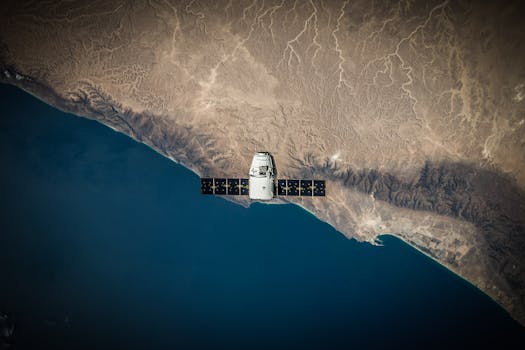
MEO Satellites: Revolutionizing Global Connectivity with Medium Earth Orbit Technology
MEO satellites, or medium earth orbit satellites, are a type of satellite that operates in an orbit between 2,000 and 36,000 kilometers above the Earth’s surface. This range is higher than low earth orbit (LEO) satellites but lower than geostationary orbit (GEO) satellites. MEO satellites are gaining popularity due to their unique advantages and applications in various fields, including telecommunications, navigation, and Earth observation.
History and Development of MEO Satellites
The concept of MEO satellites dates back to the 1960s, but it wasn’t until the 1990s that the first MEO satellites were launched. The initial MEO satellites were primarily used for navigation and communication purposes. However, with advancements in technology, MEO satellites have become more sophisticated and are now used in a wide range of applications. The development of MEO satellites has been driven by the need for faster and more reliable communication services, as well as the increasing demand for global navigation and Earth observation capabilities.
Benefits and Applications of MEO Satellites
MEO satellites offer several benefits and applications, including:
Global connectivity: MEO satellites provide global coverage, enabling communication services to reach remote and underserved areas. They are particularly useful in areas where terrestrial infrastructure is limited or non-existent.
Low latency: MEO satellites have a lower latency compared to GEO satellites, making them suitable for real-time communication applications such as voice and video calls.
High-speed data transfer: MEO satellites can support high-speed data transfer rates, making them ideal for applications such as broadband internet and data transmission.
Navigation: MEO satellites are used in navigation systems such as GPS, GLONASS, and Galileo, providing location information and timing signals to users around the world.
Earth observation: MEO satellites are used for Earth observation applications such as weather forecasting, climate monitoring, and disaster management.
Challenges and Limitations of MEO Satellites
Despite the benefits and applications of MEO satellites, there are several challenges and limitations associated with their use. These include:
Interference: MEO satellites can experience interference from other satellites and terrestrial systems, which can impact their performance and availability.
Orbit congestion: The MEO orbit is becoming increasingly congested, which can lead to collisions and interference between satellites.
Regulatory challenges: The use of MEO satellites is subject to regulatory challenges, including the need for frequency coordination and licensing.
Future of MEO Satellites
The future of MEO satellites looks promising, with ongoing advancements in technology and the increasing demand for global connectivity and navigation services. The development of new satellite constellations and the use of advanced technologies such as phased arrays and digital payloads are expected to further enhance the capabilities and applications of MEO satellites. Additionally, the use of MEO satellites in emerging fields such as the Internet of Things (IoT) and 5G networks is expected to drive growth and innovation in the industry.

